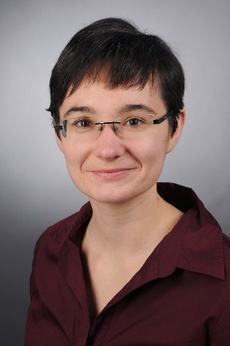
Dr. rer. nat. Karoline Morling
- Wissenschaftliche Mitarbeiterin
- Raum: 321
- Tel.: +49 721 608-44115
- karoline morling ∂does-not-exist.kit edu
Institut für Wasser und Umwelt
Wassergütewirtschaft
Karlsruher Institut für Technologie
Gebäude 50.31
Gotthard-Franz-Str. 3
76131 Karlsruhe
Deutschland
Forschung
Bundesweite Modellierung von Stoffeinträgen in Oberflächengewässer mit dem Modell-System MoRE (Modeling of Regionalized Emissions)
Dissertationsthema: Import and decomposition of dissolved organic carbon in pre-dams of drinking water reservoirs (Universität Potsdam, 2017)
Laufende Forschungsvorhaben:
Veröffentlichungen
Morling, K.; Fuchs, S. (2025): Modellierung von Kupferemissionen in deutsche Gewässer durch Antifouling für Sportboote. Ergebnisse der Jahrestagung 2024 der Deutschen Gesellschaft für Limnologie (DGL) an der Technischen Universität Dresden vom 16.-20. September 2024, Dresden. Eigenverlag der DGL, Essen. ISBN 978-3-9818302-9-3
Morling, K.; Fuchs, S.; Krumm, J.; Haag, I. (2024):
Zusammenführung der bundesweiten Modellierung von Wasserhaushalt (LARSIM-ME) und Stoffeinträgen (MoRE). UBA Texte | 37/2024. Umweltbundesamt. Online verfügbar unter: https://www.umweltbundesamt.de/publikationen/zusammenfuehrung-der-bundesweiten-modellierung-von
Morling, K.; Fuchs, S. (2021):
Modelling copper emissions from antifouling paints applied on leisure boats into German water bodies. Environmental Pollution 289. 117961. https://doi.org/10.1016/j.envpol.2021.117961
Bolius, S.; Morling, K.; Wiedner, C.; Weithoff, G. (2020):
Genetic Identity and Herbivory Drive the Invasion of a Common Aquatic Microbial Invader. Frontiers in Microbiology. https://doi.org/10.3389/fmicb.2020.01598
Morling, K., Raeke, J., Kamjunke, N., Reemtsma, T., Tittel, J. (2017):
Tracing aquatic priming effect during microbial decomposition of terrestrial dissolved organic carbon in chemostat experiments. Microbial Ecology. https://doi.org/10.1007/s00248-017-0976-0
Morling, K., Herzsprung, P., Kamjunke, N., (2017):
Discharge determines production of, decomposition of and quality changes in dissolved organic carbon in pre-dams of drinking water reservoirs. Science of the Total Environment 577, 329-339. http://dx.doi.org/10.1016/j.scitotenv.2016.10.192
Morling, K., Kamjunke, N., Tittel, J., (2016):
A simplified method of recovering CO2 from bacterioplankton respiration for isotopic analysis. Journal of Microbiological Methods 121, 8-10. http://dx.doi.org/10.1016/j.mimet.2015.12.008
